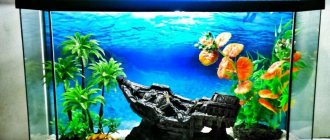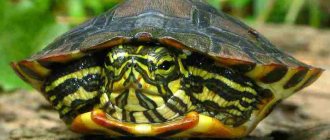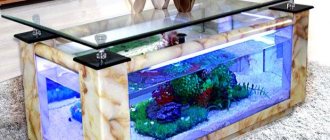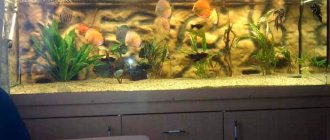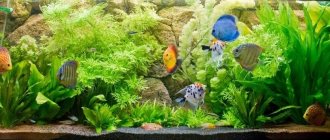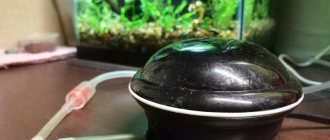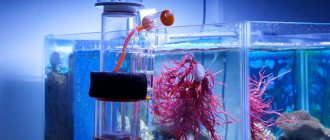Fishing will be effective with the correct selection and use of bait mixtures. Fishing for predatory fish, namely perch, is very popular. He is an omnivore, and fishermen did not fail to take advantage of this. On the shelves of specialized stores there is a large selection of a wide variety of baits for perch. Those interested can purchase ready-made branded mixtures. However, judging by the reviews, many anglers prefer to fish with homemade bait. Knowing the technology of their preparation, as well as the taste preferences of this fish, it will not be difficult to make such a mixture. You will find information on how to make bait for perch in this article.
Acquaintance
Perch is a predatory fish that constantly lives in large or small schools. Unlike pike and pike perch, it feeds on small animals: bloodworms, maggots, worms, etc. This should be taken into account by those who are planning to make bait for perch with their own hands. The bait mixture must contain exactly these components. Judging by the reviews of fishermen, problems with purchasing these ingredients usually do not arise. For example, food bloodworms are obtained exclusively for the preparation of various bait mixtures, and are sold in every fishing store. Beginners are mainly interested in the technology of preparing bait for perch with their own hands. Recipes for the most catchy ones are further in the article.
Diseases
Unpainted glassfish rarely have health problems. Multi-colored Changa-Ranga have weak immunity; in poor conditions they easily get sick:
- Oodiniumosis (“gold dust”). The disease is accompanied by itching in the fish and the appearance of a yellowish coating on the body. Treat the disease with fever and copper sulfate.
- Ichthyophthyriasis (“semolina”). White dots appear on the body of the perch. Treated with medications from the pet store.
- Dropsy. The belly of the perch swells, the scales bristle. To get rid of dropsy, provide glass fish with a calm environment, gradually increase the quality of the water, and feed your pets food mixed with antibiotics.
- Fin rot. Bacteria attack the tail and fins, ultimately leading to their complete disappearance and death of the fish. Treated with malachite greens.
- Tuberculosis. A long stay in poor quality water or the appearance of infected fish in a tank stimulates this terrible disease. Rarely treatable.
Neglected diseases and sudden changes in water parameters lead to death. Perches can suffer from a lack of oxygen (hypoxia), ammonia and chlorine poisoning.
About feed mixture for summer fishing
At this time of year, the habitat of perch is thickets, snags, underwater holes and pools. According to experts, the most effective bait for perch in the summer will be a mixture based on earthworms. In addition, many fishermen season their mixtures with bloodworms, mussels, amphipods, pond snails, and leftover meat and offal. Sand can be used as bait. If you throw a small part of it into the water, the perch, due to its natural curiosity, will swim closer. Some fishermen use clotted blood. You can also use a special preparation “Albumin”, with which fishermen soak bread crumbs and throw them into the water. According to experts, eggs, fry and invertebrates are also of great value for perch in the summer. Do-it-yourself bait should be made from animal residues.
Kissing gourami
This species was first described by the naturalist Cuvier in 1829. The kissing gourami is found throughout Asia, in countries such as:
- Cambodia;
- Thailand;
- Burma;
- Borneo;
- Java;
- Indonesia.
The body is compressed and narrow. The pectoral fins of these flat aquarium fish are round in shape, large and transparent. The body color is pink, there are shiny scales. Like other labyrinths, the kissing gourami has a developed organ that allows it to breathe oxygen if there is little of this gas in the water. The most striking feature of these fish is their lips.
Gourami are large and fleshy, with small teeth on the inside of their mouths. They use these teeth to scrape algae off glass and rocks in the aquarium. In nature, the fish grows up to 30 cm, in an aquarium it is usually half that size (about 15-16 cm). Life expectancy is 6-8 years, although cases have been recorded when the fish lived up to 20 years.
These fish are omnivores. In nature they do not disdain anything. They eat algae, insects and zooplankton. In captivity they feast on food of all types:
- bloodworm;
- coretra;
- Artemia;
- tubifex
When young, the fish are well suited for community aquariums, but as they mature, individuals become aggressive. They can attack small fish, less often large fish. It is better to keep adults separately, or place them together with larger fish. Aggression is a fickle indicator; two different individuals do not always behave the same way. Kissing gouramis are good hunters, so you should not neglect the recommendation of separate keeping.
Some other breeds of aquarium fish also belong to the gouramis:
- pearl gourami;
- opal;
- marble;
- blue;
- opal;
- dwarf.
Usually the name reflects a distinctive feature of color or body shape.
Required Components
Summer bait for perch should be seasoned with the following ingredients:
- Earthworm, dung or earthworm.
- Feed bloodworm.
- Maggot and its larvae.
- River mollusks. Shells should not be used.
- Chopped fish or crayfish fillet.
- Larvae of caddisfly or tubifex.
- Dry blood, namely the drug "Albumin".
According to experienced fishermen, it is impossible to say for sure which bait for perch will be the most effective, since the taste preferences of a given fish may differ in different bodies of water.
Adviсe
- Glass changa-ranga look more impressive with colorful neighbors like zebrafish and rasbora cuneiformis. These views create contrast.
- Do not use a carbon dioxide generator for plants in brackish water. This can upset the biological balance.
- If you want to place incompatible species in one tank, get a spacious aquarium and place a lot of hiding places in it. The likelihood that some neighbors will harm others is reduced.
- When buying glass fish, inspect them. If the fish are depressed and damaged, do not purchase these perches. Avoid buying painted fish; they will not decorate your aquarium for long. There are colorful species that are healthy and long-lived, such as rasboras and zebrafish.
Artificial coloring of glassfish is inhumane, so the sale of colored specimens is prohibited in Europe. To introduce paint, the fish's skin is pierced with a needle. Often on sale are GloFish - thornets, zebrafish and barbs of rich colors. The species was created by genetic modification. There are many conflicting opinions about such individuals.
Previous
FishMicrorasbora galaxy - a beautiful and unusual fish
Next
Fish Zebra cichlid or black-striped cichlid
Compound
Bait for perch should contain:
- The basis. It is represented by dry white clay, crushed eggshells, soil, oatmeal, bran, corn or shrimp flour and breadcrumbs. It is advisable to use white bread.
- Feed base in the form of various animal components.
- Supplements Fishermen season the mixture with cake, sunflower or hemp seeds, aromatic oils, attractants and bite activators.
- Water.
According to experts, the best bait for perch is the one prepared the day before. Mostly large individuals react to it. For small and medium-sized fish, bait mixtures are prepared directly on the spot, on the shore of the reservoir.
Each of the components performs a specific function. Abundant turbidity is created due to the presence of dry blood, milk powder and daphnia in the bait. The friability of the mixture is given by river sand, worms, bloodworms and maggots. Clay is suitable as a cementitious substance. This goal is also achieved with oatmeal and egg powder.
How to attract perch in winter
Now let's look at the composition of perch bait. It is important to understand that perch is a predator. The correct composition of the fertilizer is based on this. The main element is animal components. Most often, live bloodworms or jigs are used. Larvae and crustaceans hide at the bottom, making movements during their life activity. The fish feels this from afar with its lateral line. Live bloodworms will help attract perch in winter even on the most unbiting days.
In addition to live food, there are many other ways to activate a good bite:
- Ready-made store-bought mixtures;
- Homemade groundbait with the addition of animal ingredients;
- Jar with fry at the bottom;
- Rubber glove with blood and puncture;
- Vegetable bait (to attract small things).
Compositions for summer mixtures
Judging by the reviews of anglers, the following baits are quite effective:
- This mixture is made on the basis of dry crushed white clay. The bait is seasoned with small bloodworms, chopped earthworms or dung worms. Next, Albumin, honey, lavender oil and water are added to the composition. The contents are thoroughly mixed. Then the resulting mixture is made into balls.
- Corn flour and dry white clay should be added to the finished mixture. The bait is seasoned with finely chopped earthworms, crushed pupated maggot larvae, and flavorings. Next, the mixture should be mixed dry and diluted with water. It is thrown into the reservoir in the form of palm-sized balls.
- The bait is prepared on the basis of dry white clay and corn cake. The mixture is seasoned with fish meal, Albumin, finely chopped worms, meat of crayfish and mollusks, bloodworms, and then thoroughly mixed and filled with water. After completing these steps, you can sculpt bait balls.
- The basis for this bait is shrimp meal. You can purchase it in ready-made form. Many fishermen prepare it themselves by grinding shrimp. Next add ground eggshells, breadcrumbs and attractants. The container with the contents is tightly closed with a lid for 3-4 hours. Before use, add water to the mixture, after which you can roll into balls.
Reproduction
During the spawning period, the Sunny Perch's character changes dramatically. He becomes aggressive and territorial. Each male in the spawning area occupies a certain territory. With its lower lobe and caudal fin, it digs a hole in the ground up to 5 cm deep. The male fiercely guards his nest from other males. Drives all other fish away from him, including females. If the aquarium is not too large and the nests of several males are close to each other, then fights often occur. After constructing the nest, the male begins to push the female towards it. He circles her, gets close, and then they circle together. At this time, eggs are laid. The female then swims away, and he continues to guard his nest like a watchman. After a few minutes, the process of circling and laying eggs is repeated. Over the period of several such waltzes, the female Sunny Perch lays up to 300 eggs. Its small eggs stick to the pebbles. After spawning, the male completely loses interest in the female and drives her away from the nest.
The spawning process is interesting when there is one female and several males. All males build nests, but spawning occurs only in the nest of the strongest. Just like the Turkish Sultan...
After spawning, he takes care of the eggs. With strong movements of its fins, it increases the movement of water in the area where the eggs are located, thus clearing the nest of impurities and unfertilized eggs. Hatching of the larvae occurs after 2-3 days at water temperatures up to 24°. The larvae are very small. On the sixth day the fry appear. They leave the nest. The male father makes attempts to return the fry to the nest, but to no avail. It should be removed from the spawning grounds.
The fry should be fed live dust. Young Sun Perches eat a lot. But they grow slowly and unevenly. Therefore, from the age of two months, it is better to sort them into groups by size. The fry begin to show the color of adult fish as early as three months. Full color and resemblance to adults appears in young animals at 7-8 months. By the age of one year, Sun Perches become sexually mature. They can already be propagated.
About mixtures for winter fishing
In winter, perch in a reservoir does not move as quickly as in summer. Mostly he is stationed in one place. Therefore, the use of bait at this time of year is very important. Due to the fact that in winter perch often have difficulties with food, the effectiveness of fishing will depend on the correctly selected bait. Live or food bloodworms are used as the basis for it. Lumps are formed from the mixture, which are thrown into the holes every half hour. Then they sink to the bottom of the reservoir and mix with silt. In winter, bait is filled with amphipods and chopped worms.
Description
The maximum size of the fish is 8 cm. A distinctive feature is the transparency of the body. Due to the myth that glass perch are only found in salt water, they are not popular among hobbyists and beginners.
Appearance
The glass fish has a tall, flat body. The perch is translucent, the spine and internal organs are visible. The head and belly are silvery. Artificially colored varieties have a clear base and back in orange, blue, green and other bright colors. There are two-colored perches with the back and belly of different colors. The fins are pointed. The lower fin of the perch, as if in a mirror image, follows the outline of the dorsal one. The tail is forked.
Behavior
Glass fish are peaceful and playful. In nature they live in groups. When kept alone, they show shyness and depression.
Lifespan
Colorless perches live on average 3–4 years, colored ones – 2–6 months.
What to feed in spring and autumn?
During these periods, perch is found in quiet places where there is no strong current. Mostly these are sandy slopes and flooded trees. The diet consists of small fish, which the perch catches near the shore. To keep it there longer, fishermen use bait mixtures. In autumn and spring, perch feed mainly on insects, dragonflies and butterflies. These taste preferences should be taken into account when preparing bait. In addition, the mixtures must be seasoned with bloodworms and chopped earthworms.
Glass catfish
These are another transparent fish for the aquarium. Despite its name, it is impossible to recognize it as a close relative of the catfish that lives in our reservoirs. The body of these fish is compressed laterally, and not vertically. This is because glass Asian catfish do not lie on the bottom. They actively move in the water and live in schools. Transparent body tissues allow you to see the threads of the ribs and the thin spine of these amazing fish. At first glance, it seems that these individuals have no abdominal cavity with internal organs at all. However, it is not. All of them are shifted towards the head and look like an extension of the gills.
View gallery
Glass catfish aren't just Asian. There is also an African species of these fish, belonging to the Schilb family. Outwardly, they bear an incredible resemblance to their Asian namesakes. However, they are not so transparent and are distinguished by longitudinal black stripes stretching along the sides of the body. Another distinctive feature of this family is the remarkably developed adipose fin, as well as four, rather than two, pairs of antennae on the head.
Most popular recipe
Judging by numerous reviews, a bait mixture prepared as follows is very effective. This recipe is considered quite simple because it uses a minimum amount of ingredients. Therefore, even a novice angler can make bait on his own.
The main emphasis in cooking is on bloodworms. The more bait you need, the more bloodworms you will need. In addition, the mixture must be seasoned with an attractant that has the smell of a worm or fish. Due to the fact that ready-made breadcrumbs generate less dust than homemade ones, experienced fishermen use mainly homemade ones when preparing bait. Therefore, to make breadcrumbs, you should get dry white bread.
The purchased bloodworm should be placed in a cool place. Since this ingredient has a very concentrated, strong odor, it is not advisable to use it in the refrigerator. Otherwise, the owner will have to ventilate it for a long time. Next, the bread is crushed using an ordinary grater. Then an attractant is applied to the ready-made bread crumbs. Rusks and bloodworms should be carried to the pond in separate containers. They are mixed on the spot. In this case, experts recommend adhering to the following proportion: in bait for perch, crackers should be 20%, and bloodworms should be 80%. Judging by numerous reviews, homemade crackers stick well to ingredients of animal origin. In the water, such a food ball generates excellent dust, forming a stable cloud that attracts fish.
Blood
If the fisherman has blood available (for example, from a slaughterhouse), then the following interesting method can be used. Blood is poured into a rubber glove or fingertip. You can also put sand or pebbles there (to make it sink better), or tie a weight nearby. The structure is tied and a hole is pierced in the rubber with a needle. Then the feeder is lowered into a separate hole next to the catcher.
Sand bait
To prepare this mixture, you should acquire ordinary construction sand and fishmeal. The last ingredient can be purchased at the grocery store. According to experts, the most important component, as in any other bait mixture for perch, is bloodworms. Judging by numerous reviews, if you work with dried bloodworms, the bait can be stored for a long time. It’s easy to prepare: you need to mix sand and fishmeal in a 1:2 ratio. Next, the contents of the container are thoroughly mixed. The result should be a homogeneous mixture. Upon arrival at the pond, small balls are rolled out of it and used to coat the bloodworms.
Reviews
Some aquarists have been disappointed to learn that colored specimens do not live long and quickly lose color. Fans of perches note that the pets look unusual in the aquarium and are easy to breed, as evidenced by numerous photos and videos.
About rice bait
The basis for this bait mixture is rice. You can also use millet (0.3 kg). According to the recipe, the mixture consists of the following components:
- Breadcrumbs.
- One teaspoon of cinnamon.
- Vanillin (one and a half packs).
- Sugar (0.15 kg).
- Salt (teaspoon).
- Two eggs.
- Bloodworm (400 g).
The bait is made as follows:
- The ingredients need to be poured into a liter saucepan.
- To fill with water.
- Boil for two to three hours, stirring occasionally.
- Beat two eggs and place in a container with the brew.
- At the very end, season with breadcrumbs.
The bait should be dry and crumbly.
Content
Glassfish have gained a reputation for being fastidious aquarium dwellers. However, uncolored forms have strong immunity, do not require a large aquarium and live in different water parameters. Found in fresh and salt water. Suitable for beginners.
In a freshwater aquarium
Perch that was previously kept in salt water can be acclimatized to fresh water. Use a quarantine vessel with salted water, changing 10–15% of the liquid daily to fresh water. After two weeks, the glass fish gently adapts to new conditions.
In salted water
Season the water with sea salt. Table salt is not suitable for its composition. To obtain lightly salted water, add 1-2 teaspoons of salt for each liter. Measure the specific gravity of the water with a hydrometer; values of 1005–1010 are suitable. First dissolve the substance in water, then pour it into the container. Fish brought from salt water do not require long adaptation in a salted water aquarium.
Aquarium
Keep the transparent water inhabitants in a flock of 6 or more individuals. For a small group of perches in a species aquarium, a volume of 80 liters is suitable. A comfortable aquarium volume for a larger flock starts from 110 liters.
To decorate your aquarium use:
- driftwood;
- caves;
- stones;
- grottos.
- water temperature 20–26 degrees;
- hardness 8–20 dGh;
- acidity 6.5–8.
- duckweed;
- Riccia floating;
- cryptocorynes;
- Java moss;
- Thai fern.
- Filter. For a medium-sized aquarium, an internal filter is suitable. Make sure that the device does not create a strong water pressure. Perches live in bodies of water with weak currents.
- Compressor. The reservoir must be saturated with oxygen to make the glass fish comfortable. Additional aeration is provided by plants.
- Heater. Placed if necessary.
- Thermometer. A glass immersion thermometer shows the temperature more accurately than an external device.
Decorative elements should serve as shelters for perches. Avoid placing sharp decorations to avoid injuring the fish.
Water parameters
Keep perches in clean water with the following parameters:
Change the water by 25% every 7-10 days. Check the liquid for nitrates, ammonia and other harmful compounds.
Plants
Create shelters and shaded areas with floating and ground-rooted plants:
Place tall greenery in the back and small ground cover plants in the foreground. If the perch is kept in brackish water, make sure that the plant is suitable for this environment. Choose unpretentious plants that do not require intense light.
Priming
Fine, smooth soil in dark shades is suitable for glass fish. Clean the soil weekly, combining a siphon with a fluid change. Boil the stones thoroughly if they were collected outdoors. Be careful with colored primer; dyes are dangerous for fish.
Equipment
To keep a glass perch, it is enough to place:
Lighting
Create subdued lighting. Too bright light makes the fish nervous. To prevent water blooms, place the aquarium away from sunlight.
